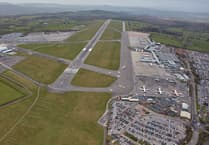THE first of a series of booklets discussing the life of those living in the Chew Valley throughout history has been made available from the post office in Chew Magna.
Titled ‘Life in the Chew Valley’, the aim of the series is to record the changes to lifestyles, communities and the landscape over the centuries and to describe how they relate to the legacy left today.
The initial booklet covers a period of prehistory from 5000BC to 2000BC when the first residents lived in the Chew Valley.
They are known as Neolithic, New Stone Age, communities and left a variety of constructions including the stone complex at Stanton Drew. A few remain, but over the centuries much has been partly or wholly destroyed; some possibly lying under the Lake.
Beyond the stones, the booklet is written to give visitors an opportunity to see and understand the legacy.
This includes three stone circles which are the second, third and fourth largest by diameter in the world - much larger than Stonehenge. All the stones come from the Chew Valley and slopes, and it appears that local people erected them.
Unlike Avebury and Stonehenge, these circles have not been repaired.
Scientific research confirms that one circle contained the world’s largest known prehistoric structure, with 400 tree poles – a metre wide, cut with flints and hauled by manpower alone.
Another circle contains scientific evidence of the largest prehistoric tree post square platform, possibly used, as in other communities, to prepare the skeletons for floating down the Chew and Avon to the Bristol Channel, with water being vital to the cycle of life.
The booklet also discusses how organic residue analysis has enabled fat residues from archaeological pots to disclose information on their diets and lives, supported by international communities today leading similar lives, who, like them.





Comments
This article has no comments yet. Be the first to leave a comment.